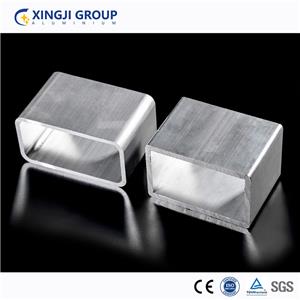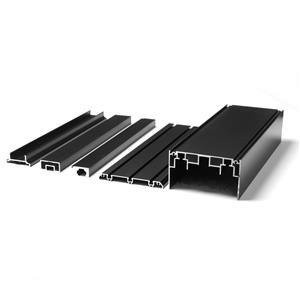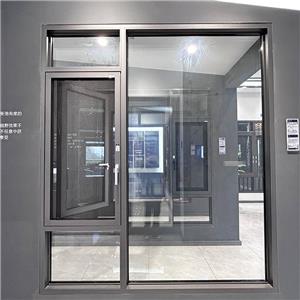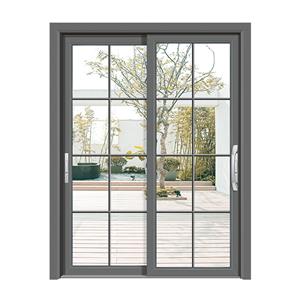Which is more expensive, aluminum windows or vinyl windows?
When it comes to choosing new windows for your home or commercial building, cost is often a significant factor in the decision-making process. Among the popular options, aluminum and vinyl windows are two widely considered materials, each with its own set of advantages and price points. This article will delve into the cost comparison between aluminum and vinyl windows, exploring various factors that influence their prices, and providing insights to help you make an informed decision.
Factors Affecting the Cost of Aluminum and Vinyl Windows
The price of windows is influenced by several factors, which vary between aluminum and vinyl options. Understanding these factors can provide a clearer picture of why one type may be more expensive than the other.
1. Material Costs: The raw materials used in manufacturing aluminum and vinyl windows have different price points. Aluminum is a metal known for its strength and durability, often leading to higher material costs compared to vinyl, which is a type of plastic (PVC) that is generally cheaper to produce.
2. Manufacturing Process: The complexity of the manufacturing process also affects the cost. Aluminum windows require more intricate processes such as extrusion, cutting, and anodizing or painting, which can increase production costs. Vinyl windows, on the other hand, involve a simpler extrusion process and often require less labor-intensive finishing techniques.
3. Energy Efficiency: Both aluminum and vinyl windows offer energy-efficient options, but the cost can vary based on the type of glazing and insulating technologies used. Aluminum windows typically require thermal breaks or insulating spacers to reduce heat transfer, which can add to the cost. Vinyl windows naturally provide good insulation, often making energy-efficient models more affordable.
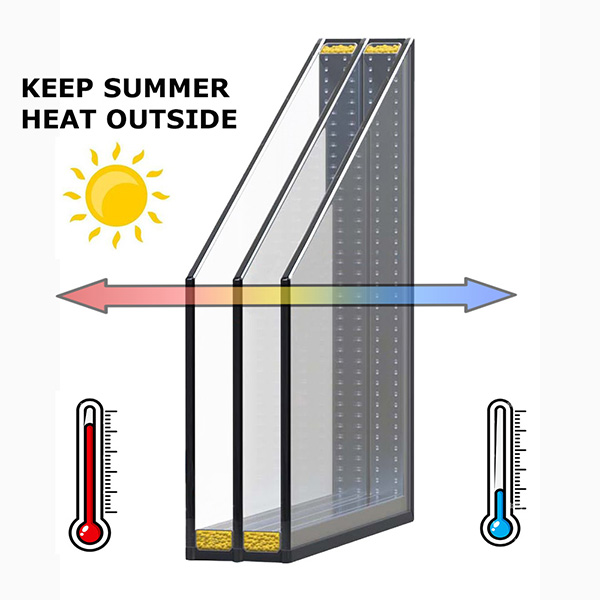
4. Durability and Maintenance: The longevity and maintenance requirements of the windows also play a role in their overall cost. Aluminum windows are highly durable and resistant to warping and corrosion, but they may need periodic maintenance such as repainting. Vinyl windows are low-maintenance, resistant to moisture and insects, and do not require painting, potentially lowering long-term costs.
5. Customization and Aesthetics: Customization options such as color, finish, and design also impact the cost. Aluminum windows offer a wider range of custom finishes and can be powder-coated in various colors, often leading to higher prices for customized options. Vinyl windows come in fewer colors and finishes, but custom sizes and designs can still increase their cost.

Cost Comparison: Aluminum vs. Vinyl Windows
To provide a comprehensive comparison, we will look at the typical cost ranges for both aluminum and vinyl windows, considering different types and styles.
1. Standard Single-Hung Windows: Single-hung windows are a common and cost-effective style. Vinyl single-hung windows typically range from $100 to $400 per window, depending on size and additional features. Aluminum single-hung windows, on the other hand, generally range from $200 to $600 per window, reflecting the higher material and manufacturing costs.
2. Double-Hung Windows: Double-hung windows, which allow both the upper and lower sashes to open, are a popular choice for enhanced ventilation. Vinyl double-hung windows usually cost between $200 and $500 per window. Aluminum double-hung windows tend to be more expensive, ranging from $300 to $700 per window due to the added complexity in construction and materials.
3. Casement Windows: Casement windows, which open outward with a crank mechanism, offer excellent ventilation and unobstructed views. Vinyl casement windows typically range from $250 to $600 per window. Aluminum casement windows, known for their sleek design and durability, can cost between $350 and $800 per window.
4. Sliding Windows: Sliding windows are another popular option, especially for contemporary designs. Vinyl sliding windows usually range from $150 to $500 per window, while aluminum sliding windows range from $250 to $700 per window, reflecting the higher cost of aluminum frames.
5. Picture Windows: Picture windows are large, fixed windows that do not open and are often used to frame a view. Vinyl picture windows generally cost between $200 and $800 per window. Aluminum picture windows, with their strong and slender frames, can range from $300 to $1,000 per window.
6. Energy-Efficient Options: For both materials, energy-efficient models with double or triple glazing, low-E coatings, and other insulating features will cost more. Energy-efficient vinyl windows typically add $100 to $300 per window to the base cost. Energy-efficient aluminum windows can add $200 to $400 per window, making them significantly more expensive due to the additional materials and technologies required.
Making the Right Choice for Your Needs
Choosing between aluminum and vinyl windows involves more than just comparing costs. It's essential to consider other factors such as aesthetics, durability, maintenance, and energy efficiency to make the best decision for your specific needs.
1. Climate Considerations: Your local climate can influence the best choice of window material. Aluminum windows, with their strength and resistance to extreme weather conditions, are well-suited for areas prone to high winds and heavy rain. Vinyl windows, with their superior insulation properties, are ideal for regions with significant temperature variations.
2. Aesthetic Preferences: The visual appeal of your windows can significantly impact the overall look of your home. Aluminum windows offer a modern, sleek appearance and can be customized with various finishes and colors to match your design preferences. Vinyl windows, while available in fewer colors, provide a clean and consistent look that suits traditional and contemporary styles.
3. Long-Term Value: While aluminum windows may have a higher upfront cost, their durability and low maintenance requirements can offer long-term value. Vinyl windows, with their lower initial cost and minimal maintenance, are also a cost-effective option. Consider the long-term benefits and potential savings on energy bills and maintenance when making your decision.
4. Installation Quality: Regardless of the material you choose, proper installation is crucial for ensuring the performance and longevity of your windows. Poor installation can lead to air leaks, water damage, and reduced energy efficiency. Be sure to hire experienced professionals to install your windows to maximize their benefits.
5. Environmental Impact: For environmentally-conscious consumers, the sustainability of the window materials may also be a consideration. Aluminum is highly recyclable and can be repurposed at the end of its life cycle. Vinyl production involves chemicals that can be harmful to the environment, but advancements in recycling technology are improving the sustainability of vinyl windows.
Conclusion
When comparing the costs of aluminum and vinyl windows, it's clear that aluminum windows generally come with a higher price tag due to their material properties, manufacturing complexity, and customization options. However, vinyl windows offer a more budget-friendly option with good energy efficiency and low maintenance requirements.
Ultimately, the best choice depends on your specific needs, budget, and preferences. By considering factors such as climate, aesthetics, long-term value, and installation quality, you can make an informed decision that enhances the comfort, efficiency, and beauty of your home or building.
For high-quality aluminum and vinyl window options, professional installation services, and expert advice, contact CURMA. Our team is dedicated to helping you find the perfect windows to meet your needs and exceed your expectations.

